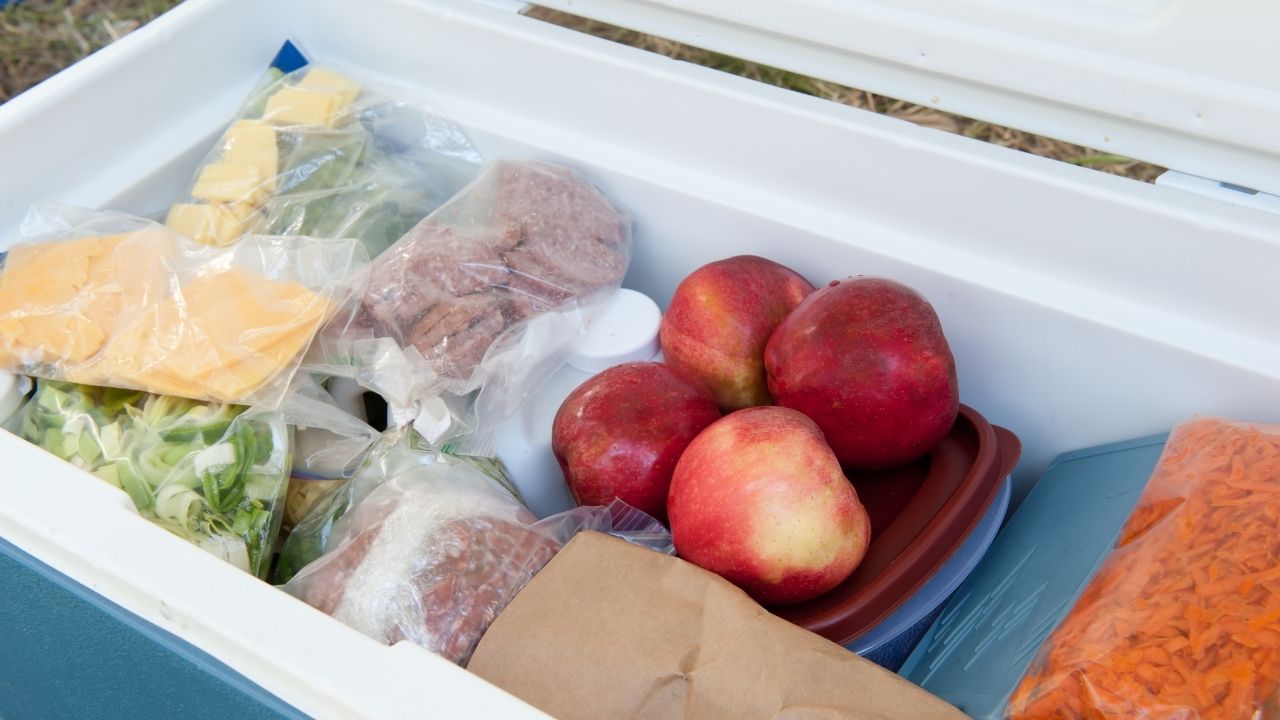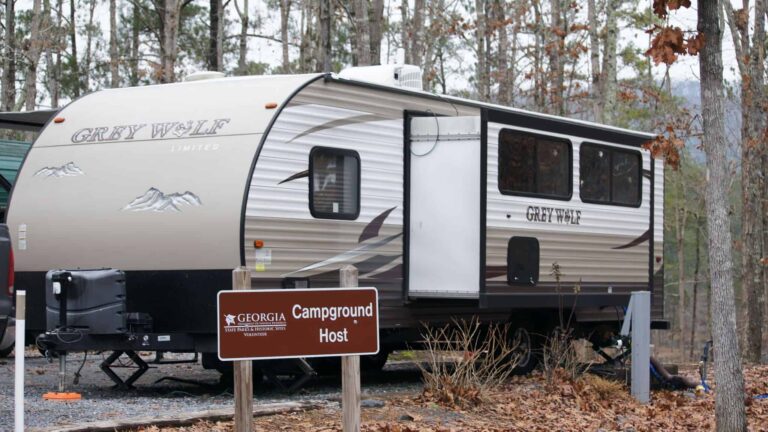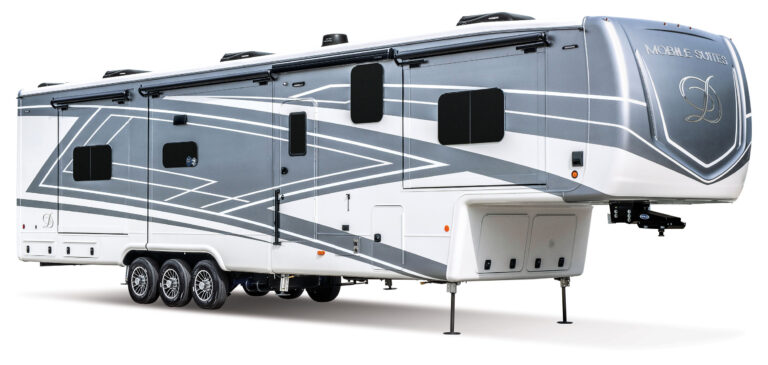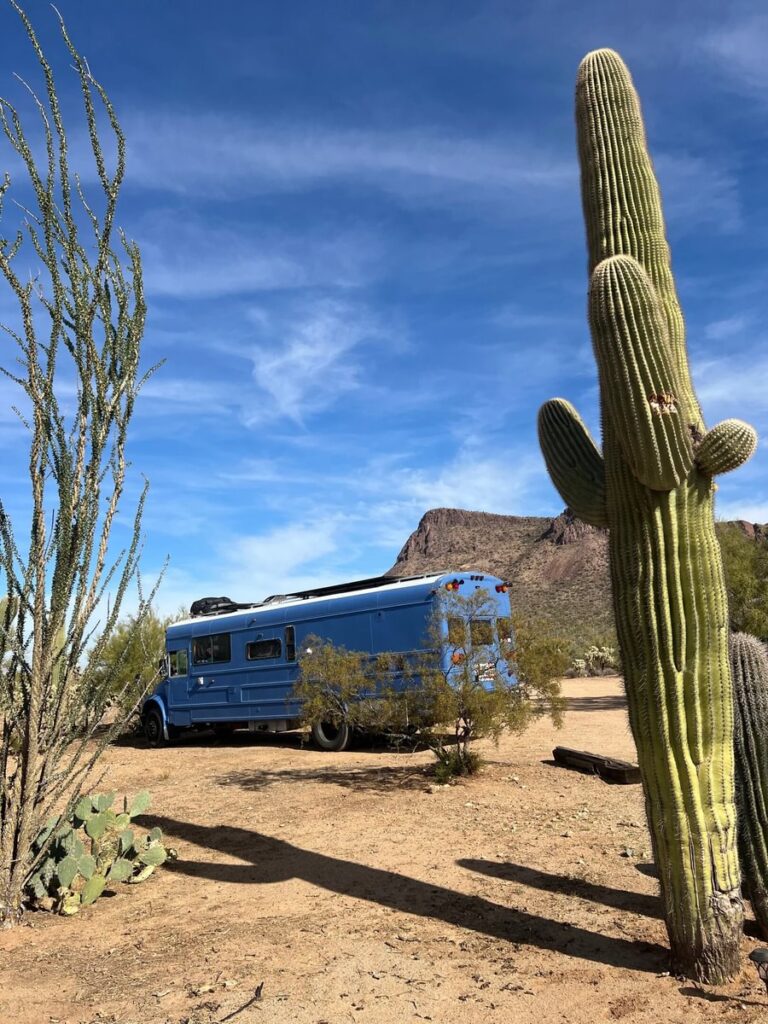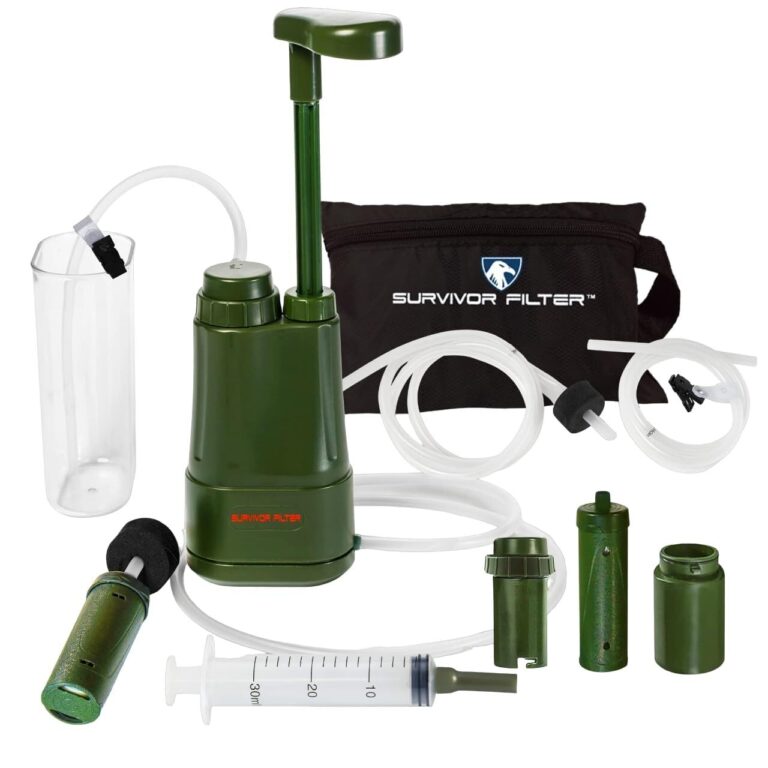🍳 Mastering the Minis: The Ultimate Guide to Small RV Kitchen Organization and Fresh Food Storage Solutions for Boondocking and Travel
Introduction: The RV Kitchen Reality
You’ve got the open road, the breathtaking views, and the freedom of your RV home. But then you turn around and face the culinary heart of your rig: The Small RV Kitchen. It’s a space where inches count, counter space is a luxury, and a full-sized fridge is often just a dream. This article is your definitive guide to conquering the tiny kitchen in your Class B camper van, teardrop trailer, or even a smaller Class C, turning its limitations into streamlined, functional cooking space.
We’ll dive into actionable, real-world organization hacks and, crucially, reveal the secrets to storing fresh food when you don’t have a large RV refrigerator, a common challenge for boondockers and long-haul travelers in North America. This isn’t just theory – it’s practical, tested advice to help you live bigger in a smaller space, keeping your fresh ingredients safe and accessible from the Rockies to the Maritimes.
The Anatomy of a Small RV Kitchen
Before we organize, let’s acknowledge the challenge. Unlike a Class A motorhome with residential-sized appliances, smaller RVs – like Class B vans (average floor space: 160-350 sq. ft.) or conventional travel trailers (average total space: 142-500 sq. ft.) – devote minimal square footage to the kitchen.
Typical RV Kitchen Constraints
| Constraint | Common RV Type Affected | The Real-World Impact |
| Limited Counter Space | All RVs, especially Class B and Teardrops | Prep space can be under 2-3 linear feet (Source: Living Vehicle data on desirable prep space). |
| Small Fridge Capacity | Most stock RVs (Absorption fridges) | Standard 6-8 cubic foot models struggle for long trips or boondocking without hookups. |
| Shallow Cabinets | Conventional Trailers, Older RVs | Items shift easily during transit; deep cabinets waste vertical space. |
| Weight Restrictions | All RVs, especially towables | Every gadget and can adds to the Gross Vehicle Weight Rating (GVWR). |
The challenge is clear: we must be minimalist in selection and maximalist in organization.
Smart Organization: Maximizing Every Square Inch of Your Small RV Kitchen
The golden rule of RV kitchen organization is simple: Everything must have a home, and that home must be vertical or mobile. Utilizing wall space, cabinet doors, and multi-purpose items is the key to creating a kitchen that works both parked and in motion.
1. Vertical and Wall Storage Solutions
Forget bulky countertop items; your RV walls and cabinet interiors are prime real estate.
- Magnetic Knife Strips: Knives take up precious drawer space and are dangerous if loose. A magnetic knife strip mounted on the wall or the inside of a cabinet door (Source 1.2, 1.3, 3.2) is a game-changer. It keeps blades sharp and instantly accessible.
- Magnetic Spice Jars: Ditch the spice rack that rattles. Magnetic spice jars (Source 1.2, 3.2) can be stuck directly to the side of the fridge, a metal backsplash, or a cabinet panel. This frees up an entire cabinet shelf.
- Utensil Rails and S-Hooks: Install a simple rail with S-hooks beneath an upper cabinet or near your stove. Use it to hang mugs, spatulas, oven mitts, and even dish towels (Source 1.2). This keeps frequently used items off the limited counter.
- Under-Cabinet Paper Towel Holder: Never let your paper towel roll take up a spot on the counter. Wall-mounted or under-cabinet holders (Source 1.1, 3.1, 3.2) keep them out of the way and protected from splashes.
2. Mastering the Cabinets and Pantry
Deep RV cabinets are notorious for becoming a black hole of shifting cans and disorganized dry goods. We combat this with containment and dividers.
- Tension Rods (Cabinet Rails): Before every trip, install small tension rods across the front of your shelves. This simple, inexpensive hack prevents items from flying out when you open the cabinet after a bumpy drive (Source 3.2).
- Stackable Shelf Inserts (Cabinet Shelf Racks): Use wire cabinet shelf racks to add a second layer of storage in tall cabinets, effectively doubling your shelf space (Source 3.2). This is perfect for canned goods, small appliances, or plates.
- Clear, Square Storage Bins: Containment is essential (Source 1.1). Use clear, stackable, square or rectangular plastic bins in your cabinets and pantry. Square bins maximize space better than round ones. Group similar items (e.g., ‘Pasta & Grains,’ ‘Breakfast Items’) and use non-slip liners beneath them to prevent movement.
- Adjustable and Pull-Out Shelving: Installing adjustable or slide-out shelving (Source 1.2, 1.3) allows you to customize the cabinet height for different items, eliminating wasted vertical space above short items like cleaning supplies or small bottles.
3. The Magic of Multi-Purpose and Collapsible Gear
When space is at a premium, every item must earn its spot by being lightweight, nesting, or multi-functional.
| Item | Space-Saving Feature | Space Saved/Benefit |
| Nesting Pots and Pans (Magma or similar) | All pieces (pots, pans, handles) fit into one stack. | Reduces cabinet space use by up to 50-70% (Source 1.3, 3.1, 3.2). |
| Collapsible Dishware (Colanders, Dish Racks, Basins) | Flattens down to 1.6 to 2 inches high. | Frees up counter and sink space when not actively washing dishes (Source 1.1, 3.1, 3.2). |
| Over-the-Sink Cutting Board/Roll-Up Rack | Creates counter space over the sink bowl. | Adds instant, temporary prep space, which is critical in an RV (Source 1.2). |
| Multi-Cooker (e.g., Instant Pot) | Combines rice cooker, pressure cooker, slow cooker, and sauté pan. | Reduces the number of separate, bulky appliances needed (Source 1.3). |
| Stackable Containers (Plates, Bowls) | Ensures a lower profile for dishes in transit and storage (Source 1.2, 3.1). | Prevents rattling and maximizes vertical stacking within cabinets. |
4. Maximizing Counter Space and Prep Area
Since prep area is the biggest pain point, you need to create it where none exists.
- Fold-Down or Removable Counter Extensions: Many RVers install a simple hinged piece of counter material that folds down when driving and flips up when prepping meals (Source 1.2). This can easily add a critical 1-2 feet of horizontal space.
- Designate a Meal Prep Zone: Even if you have to clear the same area every time, designate one clear spot for prep. Keep it organized and clear of unnecessary items like coffee makers or toasters until needed (Source 1.1).
Innovative Strategies for Storing Fresh Food When You Don’t Have a Large RV Refrigerator
The second, and perhaps more challenging, aspect of RV life in North America – especially when boondocking (dispersed camping outside of traditional campgrounds) – is fresh food storage without relying on a large, power-hungry refrigerator. You have to be strategic, focusing on shelf-stable alternatives, non-electric cooling methods, and efficient power use.
1. The Power of the Pantry: Embracing Shelf-Stable Staples
Before refrigeration, the world relied on preservation. In an RV, a well-stocked pantry of shelf-stable items is your first line of defense.
- Canned and Pouched Goods: Canned beans, tuna, chicken, and vegetables are the foundation of easy, non-perishable meals. Choose items packed in pouches for a lighter, more space-efficient option.
- UHT (Ultra-Heat Treated) Products: UHT milk, juice, and broth can be stored at room temperature for months until opened (Source 4.2). They are indispensable for coffee, cereal, and cooking.
- Root Vegetables: Potatoes, onions, garlic, and squash are surprisingly resilient. Store them in a dark, cool, and well-ventilated area – never in plastic bags, which trap moisture and cause rot (Source 2.1). A wire hanging basket works well to maximize air circulation.
- Hardy Produce: Uncut apples, oranges, and even tomatoes can be kept out of the fridge for a week or more in a cool, dark spot (Source 2.1, 2.2). Remove all plastic packaging to prevent mold.
2. Non-Electric and Passive Cooling Hacks
For foods that need to be cool, but not strictly refrigerated, these methods are used by seasoned boondockers.
- The “Root Cellar” Hack: If your absorption RV fridge is off or very small, its space can be used as a makeshift root cellar. The insulated space stays cooler than the rest of the RV. Store unwashed eggs, hearty produce like carrots and cabbage, or fermented vegetables here (Source 2.1). Keep the temperature between 55°F and 70°F.
- The Zeer Pot (Pot-in-Pot Refrigerator): This ancient Egyptian technique uses evaporation to cool food. It requires two terracotta pots (one smaller than the other), sand, and water. By keeping the sand between the pots damp, the evaporation process chills the inner chamber. This method is highly effective in dry climates like the American Southwest and can keep vegetables fresh for up to three weeks (Source 4.3).
- Insulated Chest/Foam Cooler: Use a simple, inexpensive foam chest or a dedicated cooler for fruits and veggies that benefit from a slight chill. You can rotate frozen water bottles or flat cold packs from your freezer into this secondary cooler to maintain a modestly cool storage environment (Source 2.2).
3. Upgrading Your Cold Storage: High-Efficiency 12V Refrigerators
For many RVers, especially those relying on solar power, the solution is to replace or supplement the standard absorption fridge with a high-efficiency 12V compressor refrigerator/electric cooler. These units draw significantly less power and provide consistent, reliable cooling, acting as a secondary or primary fridge/freezer.
Comparative Data: Top Compact 12V Cooler/Fridge Units (2024/2025)
| Model/Brand | Type | Capacity (Litres/Quarts) | Approximate Dimensions (L x W x H) | Key Benefit for RVers |
| Dometic CFX3 45 | Single Zone Fridge/Freezer | 46L (48.5 Qt) | 26.7″ x 19.4″ x 15.8″ | High-efficiency, durable, top-tier performance on 12V systems (Source 5.2). |
| BougeRV CRD45 Dual Zone | Dual Zone Fridge/Freezer | 45L (47.5 Qt) | 28″ x 18.1″ x 19.9″ | Allows simultaneous refrigeration and freezing in a compact footprint (Source 5.1). |
| ICECO VL60 Dual Zone | Dual Zone Fridge/Freezer | 60L (63 Qt) | Larger model with dual cooling flexibility. | Versatile, rugged metal body, dual DC/AC power compatibility (Source 5.3). |
| National Luna Legacy 50L | Dual Control Fridge/Freezer | 50L (52.8 Qt) | 28″ x 15″ x 20″ | Known for extreme durability and efficiency; a top pick for overlanding (Source 5.1, 5.2). |
Choosing one of these units (often referred to as Overlanding Fridges) allows you to run your food storage entirely off a solar-charged battery bank, eliminating the propane/AC dependence of traditional absorption fridges and expanding your fresh food capacity significantly.
The RV Chef’s Minimalist Mindset: Meal Planning & Preparation
No amount of organization can help if you overpack. The true secret to success in a small RV kitchen is a minimalist mindset applied to shopping and meal prep.
1. Extreme Meal Planning & Inventory
- Plan Every Meal: Don’t shop “just in case.” Plan breakfast, lunch, and dinner for every day of your trip, down to the exact ingredients needed. This is the single most effective way to manage limited fridge and pantry space (Source 2.2).
- Pre-Portion and De-Bulk: Before leaving your main home (or the grocery store), take everything out of its original bulky packaging. Place cereals, rice, pasta, and dry goods into stackable, clear, airtight containers (Source 4.1). Store spices in small, uniform tins or jars. This can free up up to 30% of your cabinet space.
- The FIFO Method (First In, First Out): In a small RV fridge or cooler, organize your food so the oldest items (or those nearing their expiration) are at the front. This is a common practice in commercial kitchens and prevents food waste, which is vital when grocery stops are infrequent.
2. Minimalist Cookware Collection
Every item in your RV should be a one-in, one-out decision. For cookware, stick to essentials and multi-taskers:
- One Set of Nesting Pots and Pans: As mentioned, this is non-negotiable (Source 3.1).
- One Quality Chef’s Knife (with Magnetic Storage): Skip the butcher block. Use one good knife and maybe a paring knife.
- One Large Multi-Cooker (Instant Pot or similar): Replace your rice cooker, slow cooker, and maybe even a large stock pot.
- Two Stackable Mixing Bowls and Measuring Cups: Buy ones that nest perfectly inside each other (Source 3.2).
By strictly adhering to this minimalist list, you drastically reduce the noise, clutter, and weight in your tiny home on wheels.
Kitchen Size Comparison
Understanding the size constraints of your specific RV model is the first step in successful organization.
| RV Class Type | Average Overall Square Footage (US) | Typical Kitchen Features | Space Constraints and Focus |
| Teardrop/Pop-Up | 40 – 150 sq. ft. | Minimalist exterior “galley” or 1-2 burner portable stove, tiny cooler/fridge. | Extreme Focus: Collapsible everything. Maximize dry goods storage in vehicle under-seat storage. Heavy reliance on coolers. |
| Class B Motorhome | 160 – 350 sq. ft. | 2-burner stove, single sink, tiny 3.0-5.0 cu. ft. RV absorption fridge. No oven. | Focus: Vertical wall storage (magnetic strips, hooks). Over-the-sink solutions are essential for counter space. |
| Class C Motorhome | 250 – 350 sq. ft. | 3-burner stove, often includes a microwave/convection oven and a larger fridge (up to 8 cu. ft.). | Focus: Cabinet organization (pull-outs, adjustable shelves). Managing appliance versatility and maximizing pantry depth. |
| Class A / Fifth-Wheel | 300 – 600+ sq. ft. | Residential or near-residential sized appliances, dual-basin sink, more counter space, often a full-sized fridge. | Focus: Preventing items from shifting during travel. Utilizing dividers and square containers for stability in deep cabinets and drawers. |
The table above illustrates a critical concept for RVers: your organization and storage strategy must be dictated by your rig’s class. What works for a Fifth-Wheel owner will simply not fit in a Class B camper van. This detailed breakdown ensures you focus your time and money on the most relevant organizational solutions for your specific kitchen challenge.
1. Teardrop/Pop-Up Campers: The Minimalist’s Challenge (Extreme Compact)
- Core Reality: These units are designed for quick trips and minimalist living. Their kitchens (often called “galleys”) are frequently located outside the main cabin, accessible only when parked, or consist of a very simple internal kitchenette.
- The Kitchen Battle: The fight here is not just for space, but against the elements. Storage is less about cabinets and more about securing supplies in plastic bins or durable crates that are easily moved and protected from moisture.
- Storage Strategy: Collapsible and Multi-Purpose are non-negotiable. Cooking gear must be limited to one or two nesting pots. Fresh food storage is almost entirely dependent on high-end, rotomolded coolers and non-perishable staples, as built-in refrigeration is usually nonexistent or extremely small (1-3 cubic feet).
2. Class B Motorhomes (Camper Vans): The Vertical Revolution (Maximum Constraint)
- Core Reality: Class B vans are prized for their maneuverability and ability to park in standard spots – a huge advantage in urban or national park settings. However, this comes at the cost of interior width. The kitchen is a narrow passage.
- The Kitchen Battle: Counter space is the single biggest bottleneck. Most Class B kitchens feature a two-burner stove and a single sink, with the stove cover often serving as the primary prep surface. The small absorption fridge (typically 3.0-5.0 cu. ft.) is notoriously inefficient and drains batteries quickly.
- Storage Strategy: Go Vertical. Every wall, door, and exposed surface must be utilized. Magnetic knife strips, hanging fruit nets, and over-the-sink cutting boards are foundational. Dry storage must be contained in narrow, rectangular bins that fit the tight, often curved, cabinet spaces. Extended fresh food storage demands a supplementary 12V DC compressor fridge for boondocking.
3. Class C Motorhomes: The Balanced Approach (Mid-Range Appliances)
- Core Reality: Class C RVs offer a balance of manageable size and expanded living space, often featuring slide-outs that temporarily increase kitchen floor area. They are the “family favorites” for road trips.
- The Kitchen Battle: These kitchens typically have a 3-burner stove, a microwave (often a convection oven combo), and a larger 6-8 cu. ft. absorption fridge. The primary challenge is the depth of cabinets and the rattling of items during travel.
- Storage Strategy: Focus shifts to Internal Cabinet Organization. Install slide-out drawers and adjustable shelves to tame deep pantries. Use durable, clear, and lined plastic bins to secure canned goods and glass jars, preventing them from shifting or clanking during maneuvers. Organization must be robust to handle the motion of a mid-sized vehicle.
4. Class A Motorhomes & Fifth-Wheels: The Residential Mindset (Storage Optimization)
- Core Reality: These are the largest RVs, designed for long-term or full-time living. They often feature multiple slide-outs, allowing for residential-sized refrigerators (10+ cu. ft.), kitchen islands, and full ovens.
- The Kitchen Battle: While counter space is better, it’s still often less than a traditional home. The main struggle is managing the sheer volume of items and ensuring everything is securely stowed when the slides are in and the vehicle is in motion.
- Storage Strategy: The focus is on efficiency and luxury integration. Since the fridge is larger, organization focuses on keeping it stable with specialized fridge bins and using space-saving appliances like the Instant Pot to save on propane and reduce clutter. The organization is about stability (lockable cabinets and drawers) and maximizing unused vertical space (like pantry doors) for bulky or heavy items.

In Summary: Regardless of the class, all RV kitchens—from the smallest Teardrop to the largest Fifth Wheel—demand a strategy that is compact, multi-purpose, and travel-secure. The smaller your rig, the more you must rely on vertical space and non-refrigerated food storage solutions. The larger your rig, the more your focus shifts to securing your residential-style contents and optimizing the deep cabinet interiors.
Conclusion: Live Large in a Small RV Kitchen
Traveling through North America in an RV, be it a nimble Class B or a sturdy Travel Trailer, is an exercise in resourcefulness. The small RV kitchen should not be a source of stress, but a symbol of smart, intentional living.
By implementing smart organization hacks – going vertical with magnetic strips, utilizing collapsible gear, and employing shelf dividers – you can transform your limited cabinet space and counter area into an efficient culinary workstation. Moreover, by thoughtfully planning meals and embracing alternative cold storage solutions like UHT products, dedicated cooler chests, or investing in a high-efficiency 12V fridge, you can enjoy fresh, healthy food even during long stretches of boondocking away from the grid.
Embrace the challenge, get creative with your storage, and you’ll find that mastering your mini-kitchen is the last step to achieving true freedom on the open road. Happy cooking, and safe travels, from the US to Canada!

